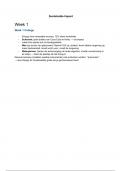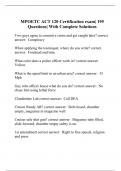College aantekeningen
Aantekeningen Sustainable Impact (IOB3-5) colleges + reader + workshops
Complete aantekeningen van de colleges, hoofdstukken uit de reader en de workshops van het vak Sustainable Impact (IOB3-5) van het 2e studiejaar van de studie Industrieel Ontwerpen aan de TU Delft
[Meer zien]













